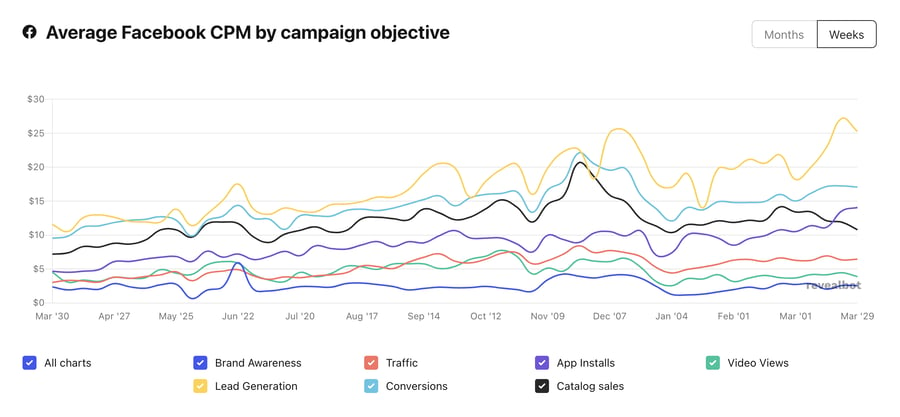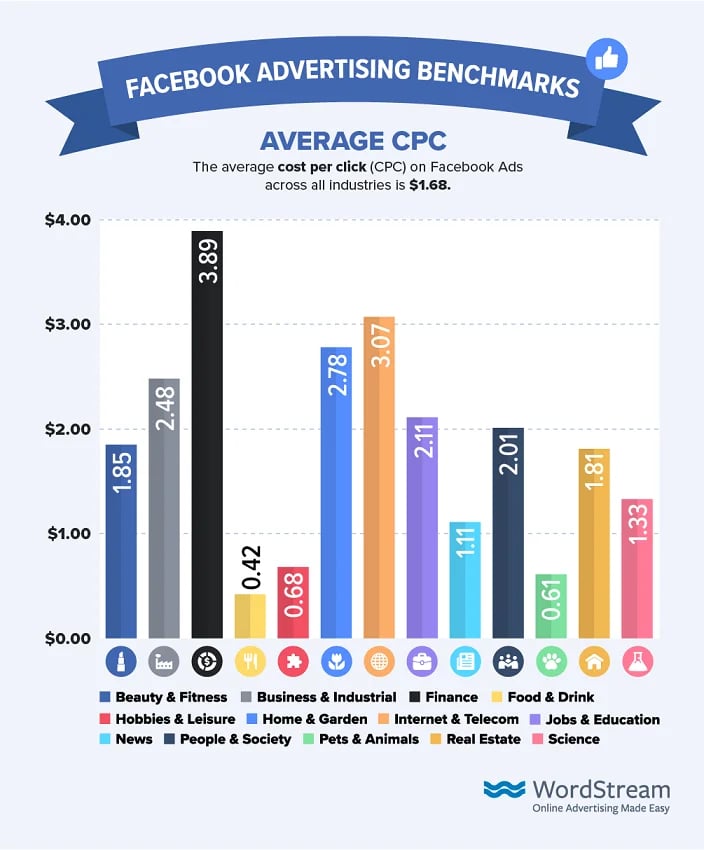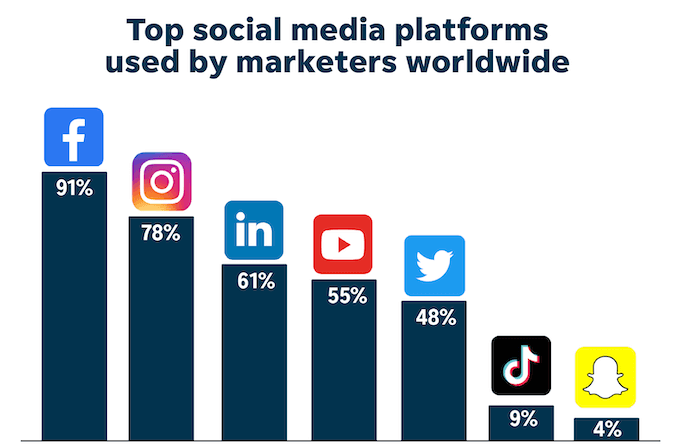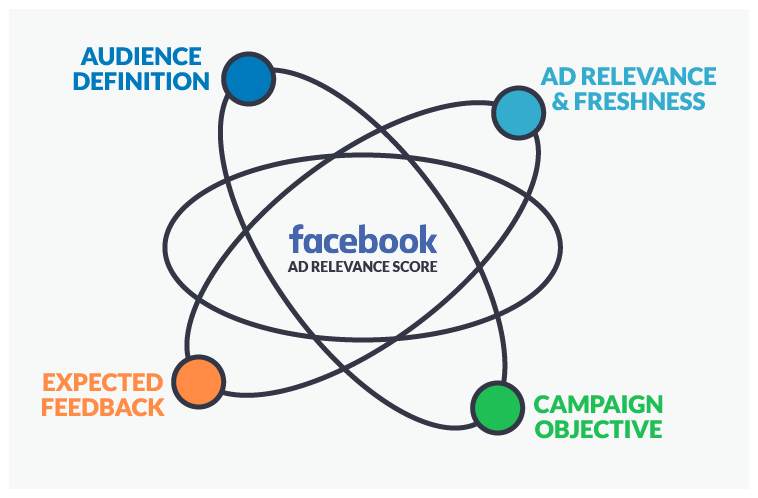Ready to take your Facebook advertising to the next level in 2026? With growing competition and evolving advertising costs, it's crucial to understand the factors impacting your ad spend and how to optimize for exceptional results.
In this comprehensive guide, we’ll answer the question, “How much does Facebook advertising cost?”
Explore Facebook ads costs, compare across different industries, and receive practical guidance for crafting cost-effective and successful Facebook user and ad campaigns.
By the end, you'll possess the expertise and resources necessary to optimize your advertising budget, maximize the potential of your Facebook users, manage Facebook ad costs, and excel in the Facebook ad auction, driving your business to new heights.
Key Takeaways
-
Facebook ad costs vary depending on factors such as target audience, quality and relevance of the ads, bidding strategy and competition.
-
Strategies to lower Facebook Ad Costs include optimizing targeting & audience selection, testing different formats & strategies and monitoring performance.
-
Best practices for successful advertising involve leveraging A/B testing & optimization techniques along with high-quality visuals to capture attention.
Facebook Advertising Costs Overview

The landscape of Facebook advertising costs can be quite complex, with several key components to consider. In 2026, the average Facebook advertising cost, in terms of cost-per-click (CPC) for running Facebook Ads itself, is estimated to be $0.94, the average cost per thousand impressions (CPM) to run Facebook ads cost only in Facebook ads manager is $12.07, and the average cost per lead (CPL) to run Facebook ads cost only in Facebook ads manager is $5.47.
These figures, however, aren’t fixed. A variety of factors such as target audience, ad quality, relevance, competition, strategy of bidding and industry can sway your ad costs.
Average CPC for Facebook Ads
The the Facebook ads costs or cost--per-click (CPC) metric is a crucial aspect of Facebook ads costs and advertising, as it directly impacts your ad spend and overall campaign performance. In 2026, the average CPC for a Facebook ad cost on Ads hovers around $0.94. This figure has seen a slight increase from previous years.
The typical range for CPC on a Facebook ad cost on Ads can be anywhere from $0.25 to $5.00, which is important to consider when comparing the amount Facebook offers for ad cost with other advertising platforms like Google Ads.
In the past, CPCs typically started lower at the beginning of the year and rose as the year advanced, driven by the dynamics of the Facebook ad auction and advertiser competition. The onset of the pandemic in 2020 led to a substantial CPC decline as many advertisers withdrew their ads.
The CPC trend has steadied in 2026 and reverted to its customary pattern, showing a gradual increase throughout the year.
Average CPM for Facebook Ads
The cost per thousand impressions (CPM) in Facebook ads is another significant factor to consider when evaluating Facebook advertising costs. In 2026, the average CPM for Facebook Ads is estimated to be between $12.07 and $14 for 1,000 impressions. This is a slight increase compared to the average CPM of $11.34 in 2020.
Businesses, particularly those focusing on building brand awareness through campaigns, should closely track the CPM metric. It’s a useful tool for assessing the efficiency of your ad spend and guiding your advertising budget allocation decisions.
Remember, CPM can fluctuate depending on the industry and campaign objectives. Therefore, diligently monitor your campaign performance and adjust as needed to refine your ad costs.
Average CPL for Facebook Ads
Cost per lead (CPL) is another valuable metric when analyzing Facebook advertising costs, as it directly reflects how much you’re paying to acquire a potential customer.
In 2026, the average CPL for Facebook ads is estimated to be $0.38, with a high of $0.52 recorded in May 2021.
The average CPL across all industries is $19.68.
CPL can be a more insightful metric than CPC or CPM for businesses focused on generating leads and conversions.
By monitoring your CPL, you can better understand:
-
Which campaigns are driving the most leads at the lowest cost
-
How to allocate your budget more effectively
-
How to maximize your return on ad spend (ROAS)
Bear in mind that factors such as industry, target audience, and ad quality can cause significant fluctuations in CPL. Hence, consider these elements when benchmarking your CPL against the industry standards.
Factors Influencing Facebook Ads Cost
As previously mentioned, several factors can influence your Facebook page, business, landing page, landing page, and ad costs.
These factors include:
-
Target audience
-
Ad quality and relevance
-
Bidding strategy
-
Competition
Grasping these factors and their influence on your ad spend is vital for campaign optimization and effective budget utilization.
Let’s examine each of these factors to understand their effect on your Facebook advertising costs.
Target Audience
Your target audience plays a significant role in determining your Facebook ad costs. By narrowing the scope of your audience, you can potentially lower your cost per click (CPC). Defining your target audience based on their demographics, interests, and behaviors is paramount to ensure your ads reach the most pertinent users.
One way to optimize your target audience is by conducting market research, segmenting your audience, and utilizing data and analytics to gain insights into your audience’s preferences and needs. By refining your audience targeting, you can reduce your ad costs while still reaching users who are most likely to engage with your ads and convert.
Ad Quality and Relevance
The quality and the relevance score of your ads also have a direct impact on your ad costs. Facebook assigns a relevance score to each ad, which your ads cost is determined by the ad’s expected performance and how well it resonates with your target audience. Ads with higher relevance scores tend to have lower costs, as they’re more likely to be shown to users who are interested in your offering.
To improve your ad quality and relevance, follow these steps:
-
Target the right audience.
-
Use compelling and relevant ad copy.
-
Incorporate high-quality visuals in your ads.
-
Monitor and optimize your ad campaigns regularly to ensure they’re meeting your objectives and resonating with your target audience.
Bidding Strategy
.jpg?width=900&height=570&name=628e4e1cf88ac5496f4ea17d_Facebook%20bid%20strategies%20-%20pros%20and%20cons%20(1).jpg)
Your strategy of bidding, also plays a crucial role in determining your Facebook ad costs.
The Facebook ad auction cost also offers three bidding strategies:
-
Manual bidding: Allows you to have full control over the cost per action.
-
Automatic bidding: Automatically adjusts your bids to achieve better results and optimize your campaign performance.
-
Bid caps: Sets a maximum bid limit to control your ad costs.
Experimenting with different bidding strategies can help you find the most cost-effective option for your campaign. It’s important to understand the trade-offs between manual and automatic bidding, as well as the implications of using bid caps.
By testing various bidding strategies and monitoring the campaign objective, and their impact on your ad costs, you can make informed decisions on how to allocate your budget for each campaign objective, the right campaign objective and campaign details for maximum results.
Competition and Industry
Competition within your industry can significantly impact your own, Facebook page, landing page, or business' advertising costs, as multiple businesses may be targeting the same audience. Industries with higher competition, such as finance, insurance, and home improvement, generally have higher ad costs.
Being aware of the level of competition in your industry and how it affects your ad costs is essential for budget planning and campaign optimization.
To stay ahead of the competition, you should:
-
Keep an eye on industry trends
-
Monitor competitor activities
-
Continuously test and optimize your own ad campaigns to ensure you’re reaching your target audience at the most cost-effective price.
Facebook Advertising Costs by Industry

Facebook ad costs can vary significantly across different industries. For instance, industries such as finance, legal services, B2B services, customer service, and insurance tend to have higher CPCs than other industries. In contrast, the average cost per acquisition for restaurants on Facebook is $12.91.
Comprehending the costs specific video ads have to your industry and campaign objectives is key for efficient ad budget planning and campaign optimization. By comparing your ad costs with industry benchmarks, you can identify areas for improvement and make data-driven decisions to enhance your ad performance and lower your costs.
Strategies to Lower Facebook Ad Costs

There are several strategies that can help you lower your Facebook ad costs while maintaining the same ad and effectiveness.
These include:
-
Improving ad quality and relevance
-
Optimizing targeting and audience selection
-
Testing different bidding strategies and ad formats
-
Monitoring and optimizing campaign performance
These ad set and ad placement strategies not only assist in reducing your ad costs but also ensure your campaigns reach the target audience and achieve the desired outcomes. By continuously testing and optimizing ad set for ad objective in your campaigns and ad set for creative itself, you can maximize your return on ad spend (ROAS) and achieve your marketing goals.
Improve Ad Quality and Relevance
One of the most effective ways to lower your Facebook ad costs is by improving your ad's quality and its relevance score. As mentioned earlier, ads with higher relevance scores tend to have lower costs, as they’re more likely to be shown to users who are interested in your ad objective or offering.
To improve your ad quality and relevance, follow these steps:
-
Target the right audience.
-
Use compelling and relevant ad copy.
-
Incorporate high-quality visuals in your ads.
-
Monitor and optimize your ad campaigns regularly to ensure they’re meeting your objectives and resonating with your target audience.
Optimize Targeting and Audience Selection
Refining your ad sets and target audience selection is another effective way to reduce your Facebook ad costs. By narrowing the scope of your ad space and audience, you can potentially lower your cost per click (CPC).
To optimize your audience targeting and audience selection, follow these steps:
-
Conduct market research to better understand your audience’s preferences and needs.
-
Segment your audience based on specific characteristics or behaviors.
-
Utilize data and analytics to gain insights into your audience’s preferences and needs.
Follow these steps to effectively target and engage with your audience.
Refining your audience targeting allows you to reduce your ad costs while still reaching users who are most likely to engage with your ads and convert.
Test Different Bidding Strategies and Ad Formats
Exploring diverse bidding strategies and ad formats provides another avenue to discover the most budget-efficient choices for your Facebook ad campaigns. Facebook presents three bidding strategies: manual bidding, automatic bidding, and maximum bid amount caps. Through experimentation with these strategies and diligent tracking of their effects on your ad expenses, you can make well-informed decisions about budget allocation for optimal outcomes.
In addition to bidding strategies, testing different ad formats can also help you optimize your ad costs.
By experimenting with:
-
Image ads
-
Video ads
-
Carousel ads
-
Other formats
You can identify which ones resonate most with your target audience and drive the best results at the lowest cost.
Monitor and Optimize Campaign Performance
Monitoring and optimizing your Facebook ad campaigns is crucial for reducing ad expenditures and ensuring the success of your social media advertising campaigns.
Here are some steps to follow:
-
Set clear campaign objectives.
-
Regularly review your campaign performance.
-
Identify areas for improvement.
-
Make necessary adjustments to optimize your ad costs.
By following these steps, you can effectively monitor and optimize your Facebook ad campaigns.
Utilize tracking and analytics tools, such as Google Analytics, Facebook Ads Manager, and other third-party analytics tools, to m monitor the effectiveness of your ad campaigns. Continuously testing and optimizing your campaigns, gives you the needed edge so you can you can maximize your return on ad spend (ROAS) and achieve your marketing goals.
Calculating ROI for Facebook Ads
.png?width=900&height=490&name=60c86da1c75c1de2ead3d41e_Calculate%20Return%20on%20Investment%20(ROI%20).png)
To ensure optimal use of your ad spend, it’s necessary to calculate the return on investment (ROI) for your Facebook ads.
To accurately calculate your ROI, you must:
-
Divide your budget by your industry’s average cost-per-click (CPC) to estimate your monthly clicks.
-
Multiply the estimated clicks by the average conversion rate to determine the number of new customers per month.
-
Multiply that figure by your estimated customer lifetime value (CLV) to calculate your revenue return on advertising spend (ROAS).
Understanding your ROI can help you make data-driven decisions on how to allocate your advertisement's budget and optimize your campaigns for maximum results. By continuously monitoring your ROI and making necessary adjustments, you can ensure that your Facebook ad campaigns are driving the desired results and yielding a positive return on your investment.
Comparing Facebook Ads to Other Advertising Platforms

When exploring your advertising audience network options, it’s worthwhile to compare the costs and effectiveness of running Facebook advertisements along with other advertising platforms like Google Ads and Instagram Ads. Each platform offers unique targeting capabilities, ad formats, and ad placements types and also ad placements themselves, cost structures, and analytics and reporting tools.
While Facebook Ads can provide extensive ad targeting options, a range of ad formats, and comprehensive analytics and reporting tools, it’s essential to evaluate the specific needs and goals of your business and decide which other social media platform or advertising platform best suits your social media advertising and objectives.
By comparing the costs and effectiveness of different platforms, you can make informed decisions on where to allocate your advertising budget and drive the best results for your business.
Tips for Successful Facebook Advertising

Crafting successful and budget-friendly Facebook ad campaigns demands a blend of thorough planning, experimentation, and optimization. When you opt to adhere to these tips, you can optimize your advertising budget and propel your business to greater heights.
Some actionable tips for successful Facebook advertising include:
-
Designing compelling ad creatives
-
Utilizing A/B testing and optimization
-
Leveraging retargeting and lookalike audiences
-
Continuously monitoring and refining your campaigns based on data-driven insights
Launching these best practices, helps you ensure that your Facebook ad campaigns, including the Facebook ads cost, the campaign objective and Facebook ads cost side side of your Facebook ad campaign, are driving the desired results and yielding a positive return on your investment.
Ad Creative Best Practices
To create ads for mobile apps that capture your audience’s attention, generate sales, and drive engagement, it’s important to create compelling ad creatives.
Some best practices for designing eye-catching ad creatives include:
-
Employing high-quality images
-
Incorporating bright colors
-
Selecting visuals pertinent to the advertisement
-
Maintaining concise copy
-
Avoiding lengthy sentences
-
Leveraging visuals to communicate the message
These practices can help keep your ad creatives succinct and impactful.
Incorporating action words, numerical values, and questions in your headlines generation messages can make them more compelling and engaging for your audience. Also, using action words, urgency, and visuals in your call-to-action messages can effectively draw attention and encourage users to take the desired action.
A/B Testing and Optimization
A/B testing is an invaluable tool for improving ad performance and lowering costs. By comparing different variations of the same ad and determining which one yields better results, you can make data-driven decisions to enhance your ad campaigns.
A/B testing allows you to alter various variables in your ad, such as:
-
ad copy
-
creative
-
ad placement
-
bids
-
budgets
By continuously testing and optimizing your ad campaign based on the outcomes of your A/B tests, you can ensure that your ads are reaching your target audience at the most cost-effective price and driving the best results.
Utilizing Retargeting and Lookalike Audiences
Retargeting campaigns are an excellent tool for companies to reconnect with their current and potential customers, with a full audience network and clear campaign objective of reminding users of your business and compelling them to return and take action. By targeting these individuals, you can improve conversions at lower costs than targeting new audiences.
Leveraging lookalike audiences is a valuable strategy for broadening your online store's reach and enhancing brand awareness campaigns. A lookalike audiences derived from your existing customer base or website visitors lets you effectively target individuals who exhibit similar characteristics and behaviors to your current customers, thus strengthening your brand awareness efforts.
Utilizing retargeting and lookalike audiences can help you discover high-quality leads at a reduced cost with minimal optimization effort.
Summary & Takeaways
In conclusion, understanding Facebook advertising costs and the various factors that influence them is essential for maximizing your ad budget and driving the best results for your business. You can create cost-efficient and effective ad campaigns that propel your business forward.
With the right approach, you can achieve a positive return on your investment and drive your business to new heights. For effective Facebook advertising, continuously monitor and adjust campaigns based on data-driven insights, experiment with bidding strategies, ad formats, and refine your target audience selection to reach users cost-effectively.
Frequently Asked Questions
How much does it cost to advertise a page on Facebook?
On average, it costs $0.94 per click and $12.07 per 1000 views to advertise a page on social media platform Facebook.
Is $100 enough for Facebook ads?
For small businesses with daily budget and limited marketing budget, $100 can be enough daily budget to create ads online store or just for Facebook Ads. With strategic optimization and patience, you can create successful campaigns even on a tight daily budget and ad budget amount.
Is it worth paying for Facebook ads?
Facebook Ads offer an organized ad strategy used for targeting specific audiences, making them worth the investment for businesses looking to reach the right customers. By using Facebook Ads, businesses can create campaigns that are tailored to their target audience, allowing them to reach the right people with the right message. This helps to ensure that their message is seen by the right people,
How much do small businesses pay for Facebook ads?
On average, small businesses typically spend $1000 to $3000 per month on their Facebook page for ads. However, the minimum amount you would need to invest in the auction work of Facebook ad and ad space, in order to run ads and get Facebook business page started is $31 per Facebook business page ad auction work month.
How can I lower my Facebook ad spend/costs?
To lower your Facebook ad costs, focus on improving relevance and quality of ad, optimizing targeting, ad placement and audience selection, testing different ad types, bidding strategies and ad formats, the ads manager and monitoring and optimizing your ad campaign and performance.


